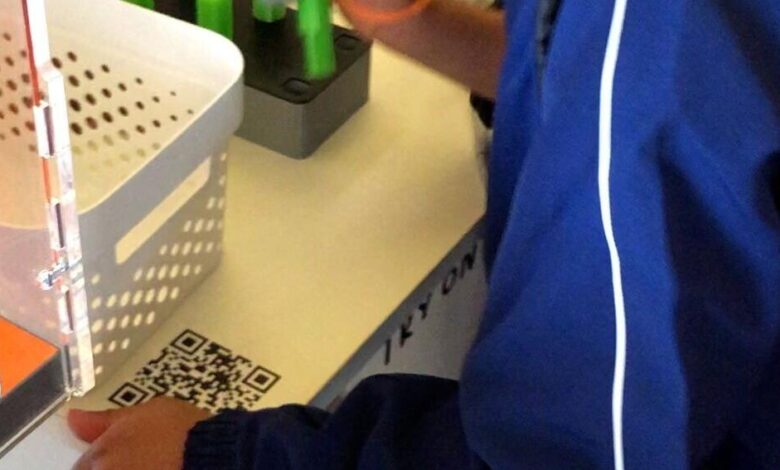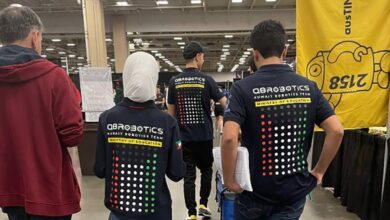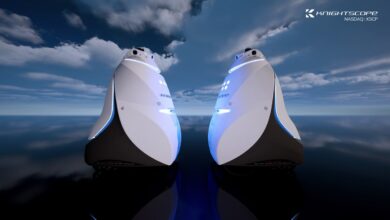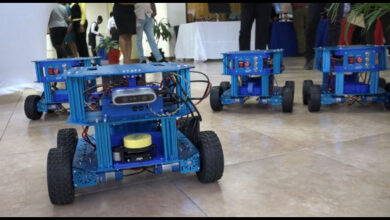RAW VIDEO: Cambridge Scientists Devise Robotic Extra ‘Third Thumb’ You Can Work As Extra Digit 6/9 | Entertainment

Credit: Dani Clode Design/The Plasticity Lab/Cover Images You could soon have an extra motorised thumb on your hand – thanks to researchers at Cambridge University. The Cambridge scientists have shown that members of the public using the extra digit, dubbed the ‘Third Thumb’, have little trouble in learning very quickly how to use an extra prosthetic thumb to pick up and manipulate objects. The team tested the robotic device on a diverse range of participants, which they say is essential for ensuring new technologies are inclusive and can work for everyone. A new field of science and engineering is creating motorised wearable devices such as exoskeletons or extra robotic body parts to advance our motor capabilities beyond current biological limitations. Such devices could improve the quality of life for healthy individuals who want to enhance their productivity and can also provide people with disabilities new ways to interact with their environment. Professor Tamar Makin from the Medical Research Council (MRC) Cognition and Brain Sciences Unit at the University of Cambridge said: “Technology is changing our very definition of what it means to be human, with machines increasingly becoming a part of our everyday lives, and even our minds and bodies. “These technologies open up exciting new opportunities that can benefit society, but it’s vital that we consider how they can help all people equally, especially marginalised communities who are often excluded from innovation research and development. To ensure everyone will have the opportunity to participate and benefit from these exciting advances, we need to explicitly integrate and measure inclusivity during the earliest possible stages of the research and development process.” Dani Clode, a collaborator within Professor Makin’s lab, has developed the Third Thumb, an extra robotic thumb aimed at increasing the wearer’s range of movement, enhancing their grasping capability and expanding the carrying capacity of the hand. It allows the user to perform tasks that might be otherwise challenging or impossible to complete with one hand or to perform complex multi-handed tasks without having to coordinate with other people. The extra thumb is worn on the opposite side of the palm to the biological thumb and controlled by a pressure sensor placed under each big toe or foot. Pressure from the right toe pulls the Thumb across the hand, while the pressure exerted with the left toe pulls the Thumb up toward the fingers. The extent of the Thumb’s movement is proportional to the pressure applied, and releasing pressure moves it back to its original position. In 2022, the team had the opportunity to test the ‘Third Thumb’ at the annual Royal Society Summer Science Exhibition, where members of the public of all ages were able to use the device during different tasks. The results are published today in Science Robotics. Over the course of five days, the team tested 596 participants, ranging in age from three to 96 years old and from a wide range of demographic backgrounds. Of these, only four were unable to use the Third Thumb, either because it did not fit their hand securely, or because they were unable to control it with their feet (the pressure sensors developed specifically for the exhibition were not suitable for very lightweight children). Participants were given up to a minute to familiarise themselves with the device, during which time the team explained how to perform one of two tasks. The first task involved picking up pegs from a pegboard one at a time with just the Third Thumb and placing them in a basket. Participants were asked to move as many pegs as possible in 60 seconds. 333 participants completed this task. The second task involved using the Third Thumb together with the wearer’s biological hand to manipulate and move five or six different foam objects. The objects were of various shapes that required different manipulations to be used, increasing the dexterity of the task. Again, participants were asked to move as many objects as they could into the basket within a maximum of 60 seconds. 246 participants completed this task. Almost everyone was able to use the device straightaway. 98% of participants were able to successfully manipulate objects using the Third Thumb during the first minute of use, with only 13 participants unable to perform the task. Ability levels between participants were varied, but there were no differences in performance between genders, nor did handedness change performance – despite the Thumb always being worn on the right hand. There was no definitive evidence that people who might be considered ‘good with their hands’ – for example, they were learning to play a musical instrument, or their jobs involved manual dexterity – were any better at the tasks. Older and younger adults had a similar level of ability when using the new technology, though further investigation just within the older adults



